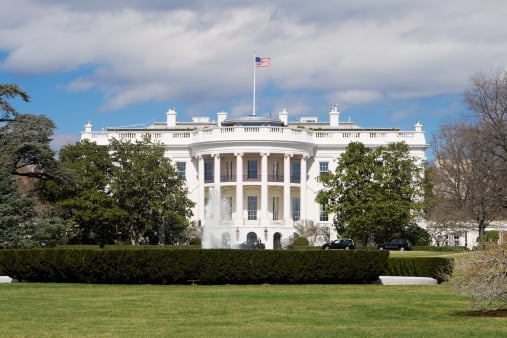White House Posts New U.S. Deficit Guess: 2017 Will Be a Very Good Year
Published:
Most federal debt and deficit forecasts, whether from the White House Office of Management and Budget or the Congressional Budget Office, show America’s situation as greatly improved five or 10 years from now. Those forecasts are wild guesses, but what is a political forecast good for unless it shows that the U.S. economy has a better future, regardless of how far into the future it is. Source: thinkstock
Source: thinkstock
The OMB Mid-Session 2014 Review reported that:
[T]he projected deficit in 2013 has decreased by more than $200 billion as compared to the projection included in the Budget. The 2013 deficit is now projected to be 4.7 percent of GDP. That is down from a deficit of 10.1 percent four years ago — representing the fastest period of deficit reduction since the years immediately following World War II.
There is not much to brag about in that. A deficit of 4.7% is still a heavy burden even for the world’s largest economy. And it is one that will widen the size of an already massive debt.
The new forecast document is a long one — 72 pages — and full of numbers that cannot be proved or predicted. The best of these is that:
Real GDP is expected to rise by 2.4 percent during the four quarters of 2013 and to increase 3.4 percent during 2014. The growth rate is projected to average 3.5 percent for the three years from 2015 to 2017. The average growth from 2013-2018 is slightly below what was published in the Budget. Beyond 2018, real GDP growth is projected to moderate. The growth rate is steady at 2.3 percent per year in 2021-2023, which is the same rate as in the Budget.
The unemployment rate is projected to reach 7.3 percent by the fourth quarter of 2013, three-tenths of a percentage point below its level in June. Unemployment is projected to decline at a moderate pace reflecting the expected pace of real GDP growth and because, as labor market conditions improve, discouraged workers are expected to rejoin the labor force. With continued growth, the unemployment rate is projected to fall, eventually stabilizing at 5.4 percent.
All of this will cause the deficit to fall from $973 billion in the government’s 2013 fiscal year to $439 billion in 2017. Along the way the deficit-to-GDP ratio will go from 6% to 1.7%. What is not highlighted is that, in the meanwhile, the total deficit sum of all the years taken together is $5.6 trillion.
Among the points about the near-term effects of sequestration and administration policies that contributed to the economic revival, what will happen years from now is merely a coda. But the country’s financial fate does not rely as much on what happens in the next few quarters, but the ripples these cause years into the future.
Want retirement to come a few years earlier than you’d planned? Orare you ready to retire now, but want an extra set of eyes on your finances?
Now you can speak with up to 3 financial experts in your area for FREE. By simply clicking here you can begin to match with financial professionals who can help you build your plan to retire early. And the best part? The first conversation with them is free.
Click here to match with up to 3 financial pros who would be excited to help you make financial decisions.
Thank you for reading! Have some feedback for us?
Contact the 24/7 Wall St. editorial team.